 Music
Music  Music
Music  History
History 10 Less Than Jolly Events That Occurred on December 25
 Weird Stuff
Weird Stuff 10 Funny Ways That Researchers Overthink Christmas
 Politics
Politics 10 Political Scandals That Sent Crowds Into the Streets
 Weird Stuff
Weird Stuff Ten Bizarre Facts About The Doge Meme
 Our World
Our World 10 Ways Your Christmas Tree Is More Lit Than You Think
 Movies and TV
Movies and TV The 10 Coolest Stars to Set Sail on The Love Boat
 History
History 10 Things You Didn’t Know About the American National Anthem
 Technology
Technology Top 10 Everyday Tech Buzzwords That Hide a Darker Past
 Humans
Humans 10 Everyday Human Behaviors That Are Actually Survival Instincts
 Music
Music 10 Surprising Origin Stories of Your Favorite Holiday Songs
 History
History 10 Less Than Jolly Events That Occurred on December 25
 Weird Stuff
Weird Stuff 10 Funny Ways That Researchers Overthink Christmas
Who's Behind Listverse?

Jamie Frater
Head Editor
Jamie founded Listverse due to an insatiable desire to share fascinating, obscure, and bizarre facts. He has been a guest speaker on numerous national radio and television stations and is a five time published author.
More About Us Politics
Politics 10 Political Scandals That Sent Crowds Into the Streets
 Weird Stuff
Weird Stuff Ten Bizarre Facts About The Doge Meme
 Our World
Our World 10 Ways Your Christmas Tree Is More Lit Than You Think
 Movies and TV
Movies and TV The 10 Coolest Stars to Set Sail on The Love Boat
 History
History 10 Things You Didn’t Know About the American National Anthem
 Technology
Technology Top 10 Everyday Tech Buzzwords That Hide a Darker Past
 Humans
Humans 10 Everyday Human Behaviors That Are Actually Survival Instincts
10 Historical Myths About Dictators
Absolute power corrupts absolutely and often weirdly. The eccentricities and brutal methods of dictators often strike a strange chord. Perhaps that’s why it is so easy for misconceptions and myths to emerge from their stories, as there is often little difference between the wildest lies and the most shocking truths.
10 Adolf Schicklgruber
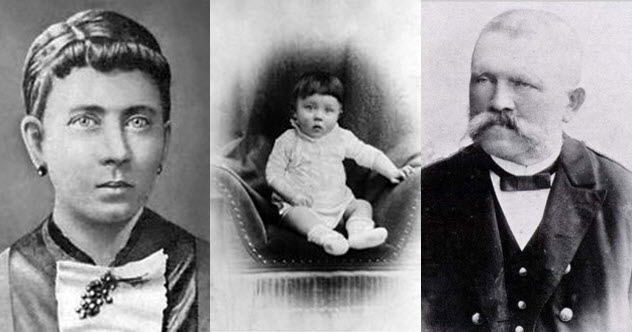
It is often claimed that Adolf Hitler was born with the surname Schicklgruber. Hitler’s father, Alois, was born out of wedlock to Maria Anna Schicklgruber, who eventually married Alois’s probable father, Johann Georg Hiedler.
Hiedler didn’t legitimize his son in life, but Alois was later legitimized by his uncle. As historian Alan Bullock said, “From the beginning of 1877, 12 years before Adolf was born, his father called himself Hitler, and his son was never known by any other name until his opponents dug up this long-forgotten village scandal and tried, without justification, to label him with his grandmother’s name of Schicklgruber.”
Reporter and psychological expert Hans Habe, then a Jewish-Hungarian writer in prewar Vienna using the name Hans Bekessi, claimed to have been the first to reveal that Hitler’s true name was Schicklgruber. Newspapers with the headline “Hitler’s Name is Schuklgruber (sic)” were sent to Germany in 1932 to influence the election. The myth spread to the United Kingdom during World War II, when it became popular to refer to Hitler as “Corporal Schicklgruber,” though he never held that particular rank.
Hitler seemed aware of his luck regarding his surname and the propaganda appeal of “Heil Hitler!” He once allegedly said, “In the circumstances, I am more than happy I was not born Oberhubinger or Unterkirchner!”
According to Hitler biographer August Kubizek, “No step [Hitler’s] ‘old man’ ever took satisfied him as completely as this one; for he found ‘Schicklgruber’ too coarse, too boorish, and also too complicated and awkward. ‘Hiedler’ he found too boring, too soft. But ‘Hitler’ sounded good and was easy to memorize.”
9 Saddam Hussein’s Human Shredder

Although Saddam Hussein was a cruel dictator, at least one story of his regime seems to have been embellished in the lead-up to the Iraq War. A British group named Indict, which sought international crime tribunals against the Baathist regime, repeated uncorroborated stories that Saddam and his son Qusay used a plastic shredder on living prisoners at Abu Ghraib prison.
In 2003, Labor MP Ann Clyde wrote about the claims in an editorial, quoting a source as saying:
There was a machine designed for shredding plastic. Men were dropped into it, and we were made to watch. Sometimes, they went in head first and died quickly. Sometimes, they went in feet first and died screaming. It was horrible. I saw 30 people die like this. Their remains would be placed in plastic bags, and we were told they would be used as fish food. On one occasion, I saw Qusay [Hussein] personally supervise these murders.
These claims were repeated by Australian Prime Minister John Howard and the global press. However, no evidence of these human shredders ever turned up. According to The Guardian reporter Brendan O’Neill, Indict refused to give the names of the researchers who interviewed the Iraqis making these claims. When asked about the veracity of the story, Clyde is said to have responded, “Who are you to say that chap is a liar?”
O’Neill claims to have spoken to a doctor who worked at Abu Ghraib under Saddam. The doctor testified that conditions were horrible there, but he had never heard of any shredding. As far as he knew, the only form of execution practiced there was hanging.
O’Neill claimed that the use of that story in Clyde’s editorial, which was entitled “See men shredded, then say you don’t back war,” was evidence of pro-war propaganda. Clyde would later claim that Indict had details from the witness, including individual names, locations, and dates, and that the truth of the matter would come out once the perpetrators had been brought to justice.
8 Fidel Castro’s Thwarted Baseball Career

When Fidel Castro was president of Cuba, an enduring myth circulated that he tried out for the New York Yankees or the Washington Senators and that he once turned down a $5,000 signing bonus from the New York Giants. The idea of Castro as an American baseball player even showed up in the alternate history superhero anthology Wildcards.
However, these myths are an American phenomenon largely unknown in Cuba. Yale professor Roberto Gonzalez Echevarria, who wrote a history of Cuban baseball, noted that there is no evidence that Castro was ever a major figure in baseball in either the US or Cuba. After he seized power, he played a few exhibition games with his novelty team Barbudos (“Bearded Ones”), although the revolution was essentially the death knell for professional winter league baseball in Cuba.
According to the Society for American Baseball Research, much of the popularity of the myth can be traced back to a tall tale told by ex–big-leaguer Don Hoak and sports journalist Myron Cope. As published in Sport magazine in 1964, Hoak claimed to have been playing in a Cuban winter league game in the 1950–51 off-season when a spontaneous anti-Batista student demonstration spilled onto the field.
Its leader, Castro, told Hoak to assume a batting stance and launched a few fastballs that Hoak fouled. The military police intervened to drive off the protest, and Castro allegedly left looking “like an impudent boy who has been cuffed by the teacher and sent to stand in the corner.”
Despite the numerous historical inaccuracies of the account and the fact that neither Hoak nor Castro had been in Havana at the same time, the story was repeated enough times by baseball historians and news agencies to become entrenched in American baseball and political lore. The $5,000 signing bonus from the New York Giants appears to have originated from a spurious claim in a 1989 article in Harper’s Magazine.
In his baseball book, Echevarria put it bluntly: “Let it be known here that Fidel Castro was never scouted by any major league team and is not known to have enjoyed the kind of success in baseball that could have brought a scout’s attention to him.”
7 Kim Jong Un Killed His Ex-Girlfriend
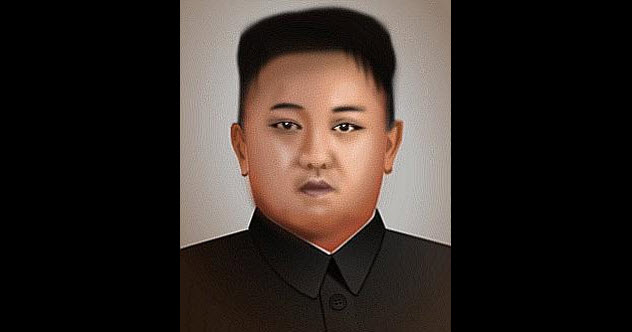
In 2013, the South Korean newspaper The Chosun Ilbo reported that North Korean dictator Kim Jong Un had enjoyed a relationship with pop singer Hyon Song-wol and then killed her when he discovered that she and other members of her band had sold pornography of themselves and owned Christian Bibles.
The article claimed that “they were executed with machine guns while key members of the Unhasu Orchestra, Wangjaesan Light Band, and Moranbong Band as well as the families of the victims looked on.” The story trended on The Wire, The Huffington Post, and The Telegraph. The Daily Dot even uploaded a video of three Korean women dancing to tinny pop music and speculated whether it could be the allegedly pornographic film.
In 2014, the rumors got shot down when Hyon appeared in military attire on the North Korean broadcaster KCTV giving a speech to an assembly of artists. The Chosun Ilbo has a history of publishing sensational stories about North Korea using dubious sources.
In an email to The Washington Post, one North Korean analyst said, “Three million deaths is a statistic, but a dead porn star is a headline. There are some horrible and lurid stories coming out of North Korea that affect many more North Korean lives and that go underreported because they don’t have the appeal of sex or sadism.”
North Korea is also unhappy with The Chosun Ilbo‘s history of spurious claims, having previously threatened to “burn [the newspaper] to the ground.”
6 Muammar Gadhafi’s Amazon Glamour
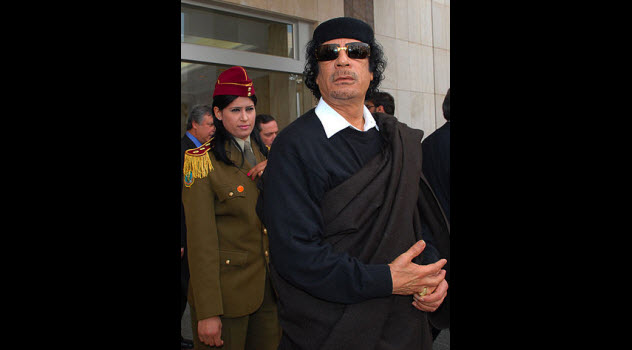
For decades, Muammar Gadhafi surrounded himself with a cadre of female bodyguards who became known as the Amazons in Europe and the Haris al-Has (the “private guards”) in North Africa. Despite having said that women were not the equals of men because they were biologically different, Gadhafi used the guards—complete with fatigues, red nail polish, and high-heeled sandals—as a symbol of the success of the Libyan revolution. To the Western media, it was often seen as eccentric or humorous, although some pointed to it as evidence of the Libyan leader’s progressive tendencies.
In 1979, Gadhafi supposedly established the Tripoli Women’s Military Academy to help promote the emancipation of women because he had promised his mother he would do so. Known as “revolutionary nuns,” the bodyguards were virgins who promised not to have sex. They also swore an oath to protect Gadhafi with their lives.
Then they were given three years of training in martial arts and military techniques. They were apparently loyal, with one trainee telling a Canadian journalist in 1995, “Without the leader, women in Libya would be nothing.”
After the dictator’s ignominious fall from power, the truth was revealed. While some of the bodyguards held prominent roles, others were coerced and abused. Five women who belonged to the unit told Benghazi-based psychologist Seham Sergewa that they had been raped by Gadhafi and his sons before being discarded.
In one woman’s case, the regime fabricated a story about her brother smuggling drugs. If she didn’t become a bodyguard, she was told that her brother would be imprisoned for life. After meeting with Gadhafi, she was taken to his private chambers. “She could not understand because she saw him as a father figure, leader of the nation, that sort of thing,” explained Dr. Sergewa in an interview with Times of Malta. “She refused his advances, and he raped her.”
The bodyguards were also used to round up other victims to be taken to one of Gadhafi’s palaces or a secret sex lair within Tripoli University, with 1970s decor, a Jacuzzi, and an adjoining gynecological suite.
When the dictator toured schools or universities, he would pat the heads of those he had chosen, who could be as young as 15. The bodyguards would later pick them up and take them to him. Those who were badly abused were often abandoned to die in parks or parking lots.
5 Nikita Khrushchev’s Disingenuous Speech
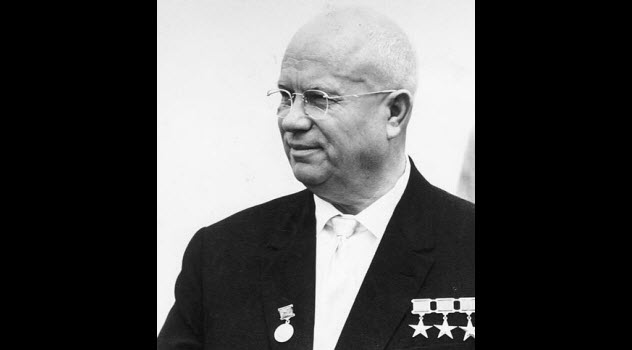
In 1956, Nikita Khrushchev gave a four-hour, 26,000-word speech to the delegates of the 20th congress of the Communist Party in which he suddenly and ferociously denounced the record of the recently deceased Joseph Stalin. Among Stalin’s crimes were assassinations of party officials and members of the Central Committee, mass repression and torture of the general population, and inadequate defenses in 1941 that contributed to the deaths of thousands of Soviet soldiers. The speech shocked the delegates and began the period of de-Stalinization in the Soviet Union.
Many have lauded Khrushchev for his audacity in turning against Stalin and freeing the Soviet Union from the abuses committed under his rule. But others take a more cynical view of the matter and suggest that Khrushchev was more interested in his personal political gain and avoiding future recriminations for the crimes of the Stalinist era. In an interview with The Guardian, Russian historian Yuri Zhukov claims, “Khrushchev was trying to dump all the blame on Stalin when his own hands were drenched in blood.”
According to documents discovered by Zhukov in politburo archives, Khrushchev had asked for permission to shoot 8,500 “anti-Soviet traitors” and had sent nearly 33,000 people to camps when he was the party chief in the Moscow region in 1937. The following year when he was put in charge of Ukraine, he requested to kill or imprison 30,000 people in a purge of intellectuals and “hostile elements.”
That is not to say that Stalin’s crimes were any less monstrous than Khrushchev made them out to be. But foisting all the blame on Stalin helped to save Khrushchev’s own skin and reputation. Russian intellectual Dima Bykov made an apt analogy in an interview with The Guardian: “Imagine Himmler giving an anti-fascist speech at a Nazi congress after Hitler’s death.”
4 Benito Mussolini’s Train Schedule
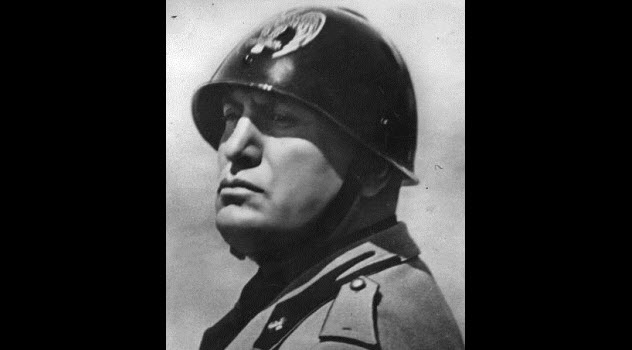
It is often said that Benito Mussolini was a repressive dictator who murdered people and destroyed freedom, but at least he made the trains run on time. Frequently, this was used as a rhetorical device to criticize the infrastructure and transportation of democratic countries. In 2015, Richard Cohen even used the expression in the New York Daily News to honor Singapore founder Lee Kwan Yew’s occasionally authoritarian regime.
During World War I, Italy’s railway system had indeed fallen into disrepair and was subsequently improved through repair. But most of this was already completed by the time Mussolini seized power in 1922. Those who took the trains under the fascist regime reported that they were often late. Mussolini never mentioned the trains in his autobiography, and the subject is rarely mentioned in his biographies.
In his book Mussolini’s Roman Empire, D. Mack Smith writes it off to simple propaganda: “The claim was advanced that Italian trains were the envy of Europe. This was an exaggeration by Mussolini who did his best to make the train service into a symbol of fascist efficiency and managed to conceal much that had been done before 1922 (before he became prime minister). His propaganda was successful, yet some travelers reported that the celebrated trains running universally on time were to some extent a convenient myth.”
In 1936, American journalist George Seldes complained of compatriots who returned from Italy singing the praises of Il Duce’s ability to get the trains to run on time, usually in response to any criticism about Mussolini’s oppressive policies. Seldes wrote, “It is true that the majority of big expresses, those carrying eyewitnessing tourists, are usually put through to time, but on the smaller lines, rail and roadbed conditions frequently cause delays.”
A Belgian foreign minister concurred: “The time is no more when Italian trains run to time. We always were kept waiting for more than a quarter of an hour at the level crossings because the trains were never there at the times they should have been passing.”
3 Genghis Khan’s Descendants
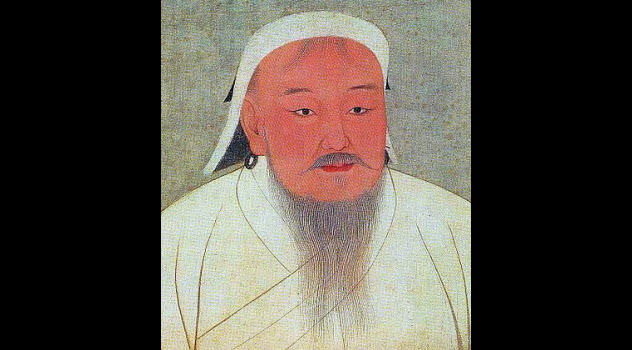
It is popularly believed that Genghis Khan is the most common genetic ancestor in the world. In 2006, an accountant in Florida made headlines when he was told by British company Oxford Ancestors that he was a direct descendant of Genghis Khan. He is said to have sought a second opinion, after which it turned out that his Y chromosome ancestors might be linked to nomadic horsemen (or Vikings). However, there was no proof of a direct link to Khan.
Still, Genghis is frequently seen as a father to millions. The biggest problem with proving this theory is that we simply don’t have any genetic material from Genghis Khan; his tomb was famously hidden and has yet to be found. In an interview with Live Science, Deborah Bolnick of the University of Texas said, “There’s nothing to actually tie [anyone’s genetic sample] to [Genghis Khan]. It could have been some other guy alive at the time who slept around a lot.”
The evidence for Genghis Khan’s genetic legacy is circumstantial. In a 2003 paper, evolutionary geneticist Chris Tyler-Smith shared his discovery that 8 percent of men in 16 Asian populations (accounting for 0.5 percent of males worldwide) share a nearly identical Y chromosome sequence, suggesting that they had a Mongolian ancestor about 1,000 years ago.
While the Khan was rumored to have fathered hundreds of children, we don’t know if these children also had large clutches of offspring themselves. Maintaining a distinct Y chromosome lineage requires a reinforcing effect, which could be explained by the Mongolian political and social order but is still far from conclusive.
Besides, Genghis has a fair bit of competition for the role of Y chromosome big daddy. Genetic studies in the past have revealed that rival Y chromosome lines could be traced to other historical lineages, particularly those of 16th-century Qing ruler Giocangga as well as the medieval Irish Ui Neill dynasty. Further research led by University of Leicester geneticist Mark Jobling found 11 distinct Y chromosome sequences in male Asian populations.
So while there is some evidence that Genghis Khan left a substantial and detectable genetic footprint, headlines (like this one from the Daily Express: “More than one billion men living today could be descended from Genghis Khan”) are exaggerating things a bit.
2 General Francisco Franco’s Military Acumen
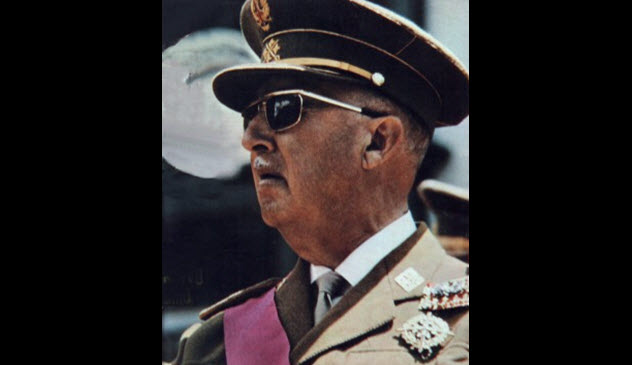
Spanish dictator General Francisco Franco portrayed himself as a great military leader. He dressed in military fatigues, took credit for the siege of the Alcazar in 1936, and used newspapers and illustrated weeklies to push his image as a formidable military leader devoted to defending Spain’s territories in North Africa.
A New York Times obituary from 1975 played up his military career and stern disposition with an apologist tone:
Franco’s cruelty was that of the centurion, impersonal and efficient. Once, inspecting troops as a colonel of the Spanish foreign legion, he had food thrown in his face by a legionnaire protesting its quality. It spattered his uniform, but his facial expression did not change, nor did he say a word. He merely took out his handkerchief, wiped off the food, and continued the inspection. Returning to his office, he calmly called an officer, pointed out the offender, and said: “Take that soldier out and execute him.”
Little was done in the immediate aftermath of his death to correct the record, as the country was nursing their Francoist hangover and shuffling toward a constitutional government. In 2000, a book was published on the 25th anniversary of his death to shatter those lingering myths. Military historian Colonel Carlos Blanco Escola claimed in The Military Incompetence of Franco that the general had made key errors and prolonged the Spanish civil war unnecessarily.
Escola especially compared Franco unfavorably to Republican general Vicente Rojo. In analyzing the battle of the Ebro River, Escola wrote, “General Rojo carried out a brilliant maneuver, much studied by the military academies of the former Soviet Union; he crossed the river and established himself on the right bank, achieving in one day what it took Franco four months, and vast amounts of ammunition, to achieve.”
Interestingly enough, the Nazis and the Fascists agreed with the anti-Franco sentiment. Neither believed that Franco was a good military leader.
1 Osama bin Laden’s Cave Hideout
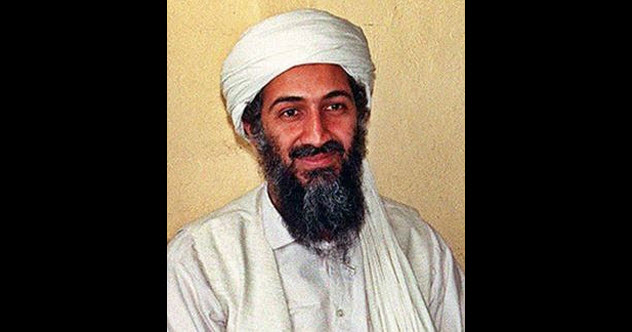
A popular aspect of the post-9/11 narrative had Osama bin Laden holed up in an Afghan cave network. President George W. Bush announced that the US military was “mounting a sustained campaign to drive the terrorists out of their hidden caves and to bring them to justice.” Meanwhile, the US Air Force bragged to Aviation Week magazine about the deployment of powered AGM-130 bombs that could be fired horizontally into caves.
But as early as October 2001, some were questioning the narrative of cave networks that could be used as hideaways in Afghanistan. Limestone, the rock from which most caves and caverns form, is rare in the country, and previous surveys for a European cave atlas had shown that Afghanistan wasn’t a hot spot for spelunking.
According to former CIA agent Milt Bearden, most of the digging in by the mujahideen was relatively shallow during the war with the Soviet Union. “Talk of caves is overdone,” Bearden said in an interview with National Geographic. “Most of these are dugouts, man-made things. [ . . . ] During their 10-year war, [the mujahideen] just burrowed into the side of the mountains in these narrow switchback valleys to put their ordnance out of harm’s way.”
According to The Guardian, the myth originated from a series of meetings between bin Laden and Western journalists in the Tora Bora mountains, a location chosen for propaganda purposes. At the time, bin Laden actually lived in a comfortable compound in a former Soviet farming collective that was controlled by a local warlord. Later, bin Laden moved to a Kandahar housing complex.
There is no evidence that he spent any time living in caves before he died in an Abbottabad housing complex. From Al-Qaeda’s point of view, the image of bin Laden huddled in a cave while the US spent millions trying to track him down strengthened his image as an “outlaw hero” to his supporters.
For years, US intelligence assumed that he would remain close to his devotees for protection, keeping close to Al-Qaeda strongholds in the tribal areas of North and South Waziristan. However, bin Laden foiled US reliance on electronic surveillance, satellites, and informants by keeping phone and Internet lines out of his house. He also surrounded himself with high walls and a small cadre of confidants. With little actionable intelligence coming in, bin Laden’s popular cave hideout mythology may have played a role in delaying his capture for years.
The DPRK thinks David Tormsen is a base and wicked hack writer who prolongs his remaining days through lists. Not far off. Email him at [email protected].








